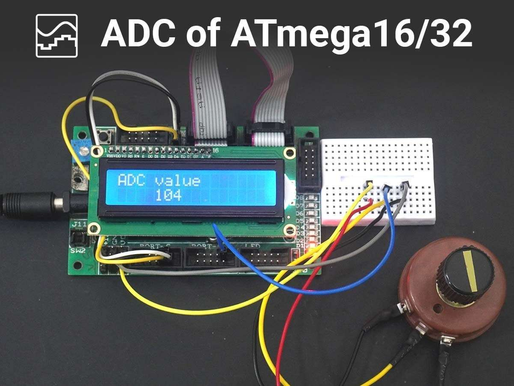top of page
Search


I2C in AVR ATmega16/ATmega32
Introduction to I2C I2C (Inter-Integrated Circuit) is a serial bus interface connection protocol. It is also called TWI (two-wire...


SPI in AVR ATmega16/ATmega32
Introduction The Serial Peripheral Interface (SPI) is a bus interface connection protocol originally started by Motorola Corp. It uses...


Watchdog Timer in AVR ATmega16/ATmega32
Introduction to Watchdog Watchdog Timer (WDT) can be helpful to automatically reset the system whenever a timeout occurs. A system reset...


Analog Comparator in AVR ATmega16/ATmega32
Introduction to Analog Comparator ATmega16/ATmega32 based on AVR has two pins for analog voltage compare i.e. AIN0 and AIN1. AIN0 is the...


EEPROM in AVR ATmega16/ATmega32
Introduction EEPROM is Electrically Erasable Programmable Read-Only Memory. It is non-volatile type of memory as it holds the data even...


External Hardware Interrupts in AVR ATmega16/ATmega32
Introduction to Interrupt AVR ATmega16/ATmega32 has three external hardware interrupts on pins PD2, PD3, and PB2 which are referred to as...


PWM in AVR ATmega16/ATmega32
Introduction to PWM Pulse Width Modulation (PWM) is a technique by which the width of a pulse is varied while keeping the frequency...


USART in AVR ATmega16/ATmega32
Introduction AVR ATmega has flexible USART, which can be used for serial communication with other devices like computers, serial GSM, GPS...


Clear Timer on Compare Match (CTC mode) in AVR ATmega16/ATmega32
Introduction Generally, compare mode is used for generating periodic events or for generating waveforms. In compare mode, there is one...


Timer Input Capture Mode in AVR ATmega16/ATmega32
Introduction to Input Capture Mode The input capture function is used in many applications such as: Pulse width measurement Period...


Timer in AVR ATmega16/ATmega32
Introduction Generally, we use a timer/counter to generate time delays, waveforms, or to count events. Also, the timer is used for PWM...


ADC in AVR ATmega16/ATmega32
Introduction to ATmega ADC ADC (Analog to Digital converter) is the most widely used device in embedded systems which is designed...


GPIO Ports and Registers in AVR ATmega16/ATmega32
Introduction AVR ATmega16 has 32 pins constituting four ports. The ports are listed below : Each port has 8 pins. The pins of these four...


Getting Started with Atmel Studio
Introduction Atmel, AVR microcontrollers (MCUs) are very easy to use. All AVR microcontrollers require Integrated Development...
bottom of page